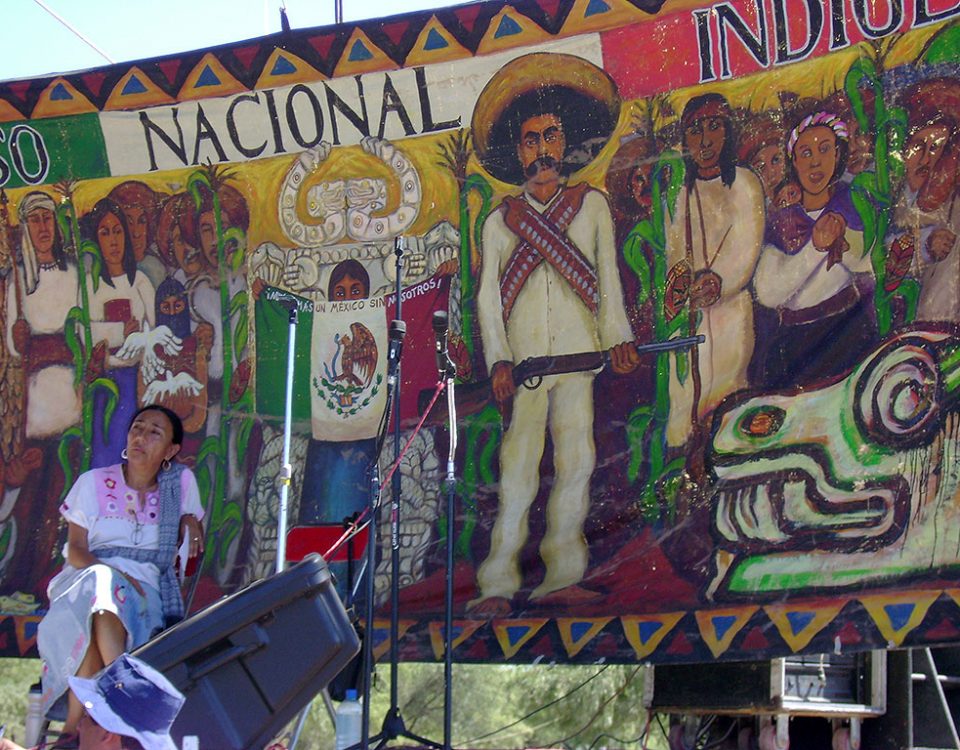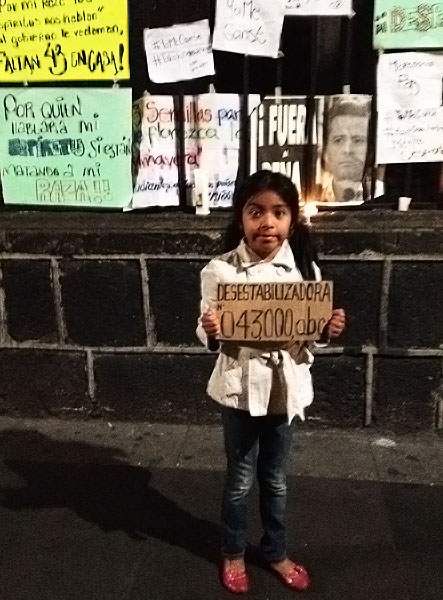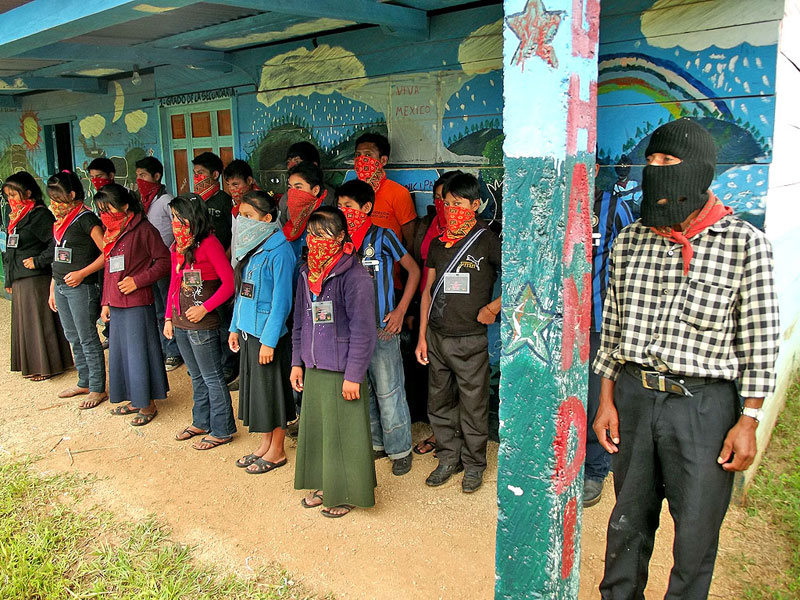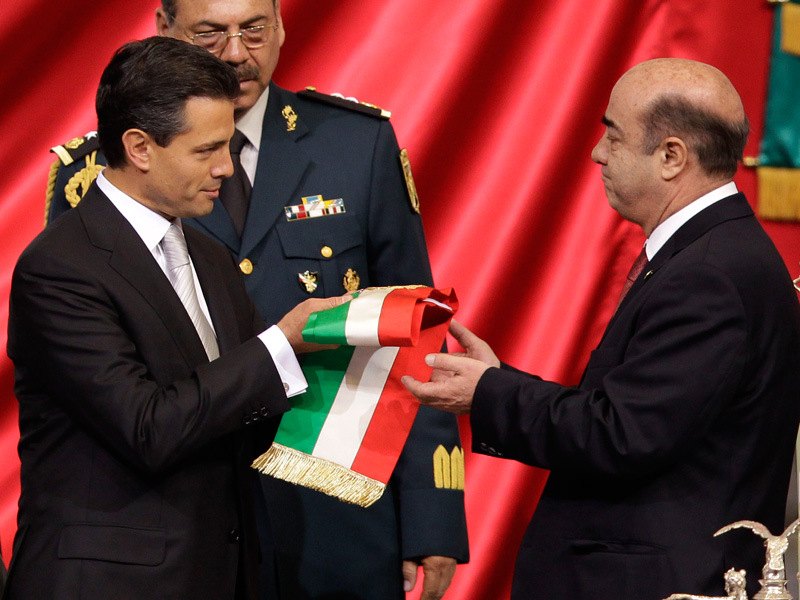2004
31/12/2004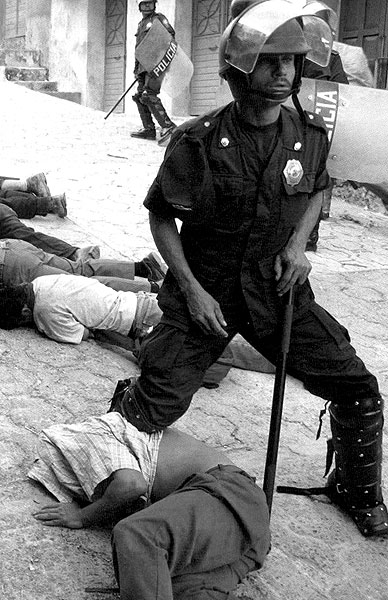
UPDATE : Ongoing armed conflict, expansion of other types of conflicts
31/03/2005Eleven years after the armed Zapatista uprising in Chiapas many think the conflict has been resolved or diminished at a national and international level. However, the root causes of conflict still exist, only now in a context of “corrosive” war in which there is no direct confrontations but rather military, economic and political strategy that attempts to reduce Zapatista resistance and that continues to generate conflicts at a community level.
 The tenth anniversary of the Zapatista uprising marked the beginning of this year. The celebration yielded different analysis about the path of the Zapatistas during the decade. The importance of “neo-Zapatistas” in the ousting of the Institutional Revolutionary Party (PRI) after 71 years in power and the strengthening of the indigenous movement on a national level was noted. Also the impact of the Zapatista struggle on the birth of the anti-globalization movement (against neoliberal economics and focused on the construction of new alternatives) was reaffirmed.
The tenth anniversary of the Zapatista uprising marked the beginning of this year. The celebration yielded different analysis about the path of the Zapatistas during the decade. The importance of “neo-Zapatistas” in the ousting of the Institutional Revolutionary Party (PRI) after 71 years in power and the strengthening of the indigenous movement on a national level was noted. Also the impact of the Zapatista struggle on the birth of the anti-globalization movement (against neoliberal economics and focused on the construction of new alternatives) was reaffirmed.
In the conflict zone, the Zapatista Councils Good Government Council have worked as autonomous governments, filling a missing link on the regional level. Their work in the mediation and resolution of community conflicts, not just between Zapatistas but also between non-Zapatistas, should be noted. The level of conflicts within and between communities was significantly reduced, even though tension remains in due to the constant presence of the military in the area. The Center for Political, Social and Economic Analysis (CAPISE), published the report “The military occupation in Chiapas: a prisoners dilemma” in which 91 military bases are pinpointed and the impact of the military presence with regards to the collective rights of indigenous peoples is analyzed.
The majority of community conflicts continue to be around public services like water, electricity and public works, as well as, the decision of the Zapatistas to have their own autonomous organization parallel to that of the government. Throughout the year, the resistance to the payment for electricity has generated some of the largest movements of civil disobedience (non-Zapatistas), in spite of the program “Better Life Tariff” through which the state government attempted to put an end to the resistance. On the contrary, it increased the number of conflicts between the population and the Federal Electricity Commission, which constantly cut electricity and continued to raise electricity prices.
In April, in the municipality of Zinancantan (in the Highlands region) the Zapatistas suffered the worst violent aggression that area had seen since 1994. Members of the Democratic Revolutionary Party (PRD) cut off the water supply to the Zapatistas in the community of Jechvo, as retaliation for not contributing economically to traditional community “cargos” (community service responsibilities) in which autonomous Zapatistas no longer participate. The violence resulted in dozens of wounded and 125 displaced families, who after a few weeks returned to their homes despite the continuing division between the two groups.
The Montes Azules Bioreserve was a constant “hot spot” and a source of controversy. The conservation policies of the government were maintained along with the plan to displace communities whose presence in the Bioreserve is considered “irregular” (the majority are EZLN and ARIC-Independent and Democratic Union of Unions). NGOs like Maderas del Pueblo Sureste (Woods of the Southeastern Peoples) and Fray Bartolome de las Casas Human Rights Center have continually demanded an integral analysis of the environmental situation of the reserve without forgetting the socio-economic factors that drove people to inhabit it in the first place.
In October the EZLN announced the “reconcentration” of a few of their communities located in Montes Azules. This represents a repositioning of the Zapatista support bases given the dispersion and distance of these communities that form a part of the Zapatista Caracoles. It is hoped that the moves will benefit the Zapatiast organization as well as the defense of these communities.
The “Project for Integrated Social and Sustainable Development of the Lacandon Jungle” (PRODESIS) was begun, co-financed by the Chiapas state government (with 16 million Euros) and by the European Union (15 million). Intended for the micro-regions that border Montes Azules, this program is presented as an instrument to eradicate poverty through skill building of local peoples and the planning and implementation of development projects. PRODESIS has been strongly questioned by NGOs as it represents a conservation model implemented from above without the prior consent of those it will affect.
On a state level, there was backtracking with respect to individual rights and the fulfillment of human rights. In February, the so called “Gag Law” was approved that drastically increased penal sanctions with regards to crimes against honor (slander, libel, defamation) and limited freedom of expression and information. To this was also added other legislative reforms that allow more social control. This new legislation closed spaces for participation, channels for protest and reduced the ability to file complaints. These laws include, the anti-gang law, anti-bioterrorism law, supervision law, etc. In addition, the president of the State Commission on Human Rights, Pedro Raul Lopez Hernandez was dismissed from his post which endangered the autonomy of this organization in charge of verifying that authorities respect human rights.
Amnesty International in their 2004 report affirmed that the efforts by the federal government to guarantee the fulfillment of human rights were insufficient. In December, they published a special report “Disregarded Abuses in Guadalajara: resistance to shedding light on human rights violations only perpetuates impunity,” denouncing the arbitrary detentions and torture suffered by protesters against the Latin American and European Union Summit held in May, in Guadalajara.
In September, President Vicente Fox presented his state of the union address in the midst of strong protests from opposition in Congress and mobilizations of a few social sectors in the streets. Similarly, motivated by the first anniversary of the Zapatista Councils of Good Government, the EZLN released a series of communiqués titled “Reading a Video.” This report from the autonomous governments responded to criticisms and recognized two important failures: the shortage of participation of women in the Councils and the influence the Zapatista political-military structure continues to have over the organization of the civil autonomous governments. At the same time, they reported the advances in the areas of health, education, nutrition, land, housing and forms of self government.
In October, municipal elections took place in Chiapas. The Zapatista Councils of Good Government kept their promise to respect the work of electoral bodies. This decision was in line with the nonconfrontational stance of the Zapatista movement. Behind this electoral process the political map was redrawn in the sense that political parties were destabilized due to constantly changing candidates and disputed alliances. The weakening of party based democracy and the discrediting of authorities has been growing on a national level as well. The agenda of all political parties is now focused on the disputed contest of the next presidential elections (2006). In the face of these party struggles, in November social forces advanced the “First National Dialogue of the Project for a Nation with Liberty, Justice and Democracy,” with the objective of uniting resistances against the neoliberal economic project.

